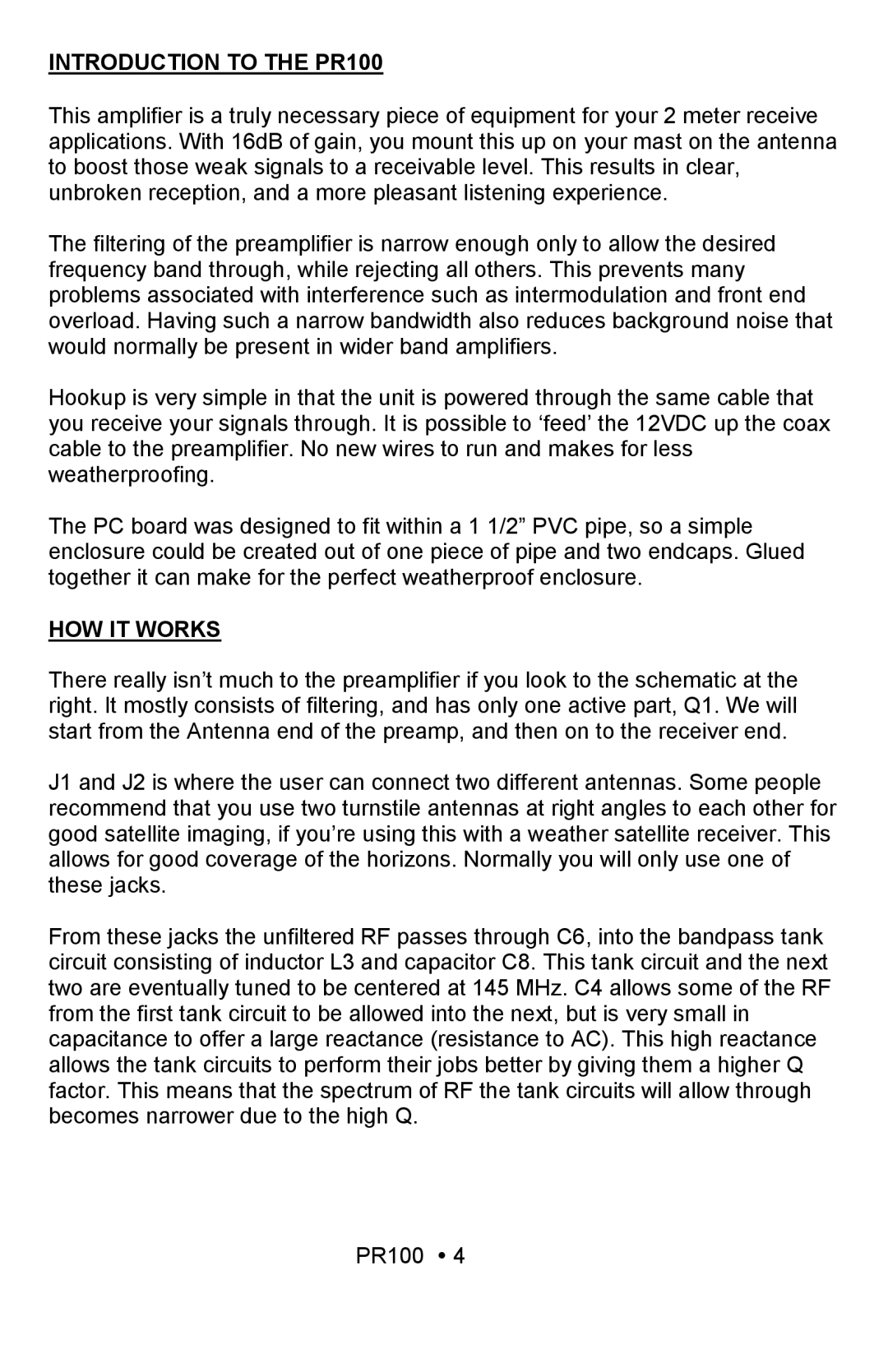PR100 specifications
The Ramsey Electronics PR100 is an advanced, yet user-friendly frequency counter designed for amateur radio operators, electronics enthusiasts, and professionals alike. This innovative device is specifically crafted to accurately measure the frequency of various signals, making it a vital tool for anyone involved in RF (radio frequency) work.One of the most notable features of the PR100 is its wide frequency range, which spans from 1 MHz to 1.5 GHz. This extensive capability allows users to measure a variety of signals, from lower amateur bands to higher frequencies often used in commercial equipment. Its high sensitivity is complemented by a low noise floor, ensuring that even weak signals can be detected and measured accurately.
The display on the PR100 is a clear LED readout that offers real-time frequency monitoring. Users can easily track frequency changes and make timely adjustments to their equipment, enhancing overall performance. The device also includes a peak hold feature, allowing users to capture the highest frequency signal for better analysis.
To accommodate a variety of applications, the PR100 supports different measurement modes, including continuous count and gated count. Continuous counting is essential for real-time monitoring environments, while gated counting is particularly useful for pulse signal analysis, allowing the user to measure pulses within a specified time window.
The PR100 boasts a simple, intuitive user interface. Its ergonomically designed controls facilitate seamless navigation through functions, making it accessible for both beginners and seasoned experts. The device also includes a BNC input for easy connection to antenna systems or other RF sources.
Moreover, the PR100 is built with portable power options in mind. It can be powered by standard AA batteries or an external DC power source, ensuring flexibility for fieldwork or in-lab use.
In terms of technologies, the PR100 utilizes advanced digital processing techniques to ensure precision and reliability. Its internal circuitry is engineered to minimize signal degradation while delivering high-quality measurements.
The construction of the PR100 reflects a blend of durability and lightweight design, making it a dependable companion for all RF endeavors. With its comprehensive features, user-friendly interface, and robust design, the Ramsey Electronics PR100 stands out as a valuable tool for anyone working with frequencies in the ever-evolving world of electronics.
